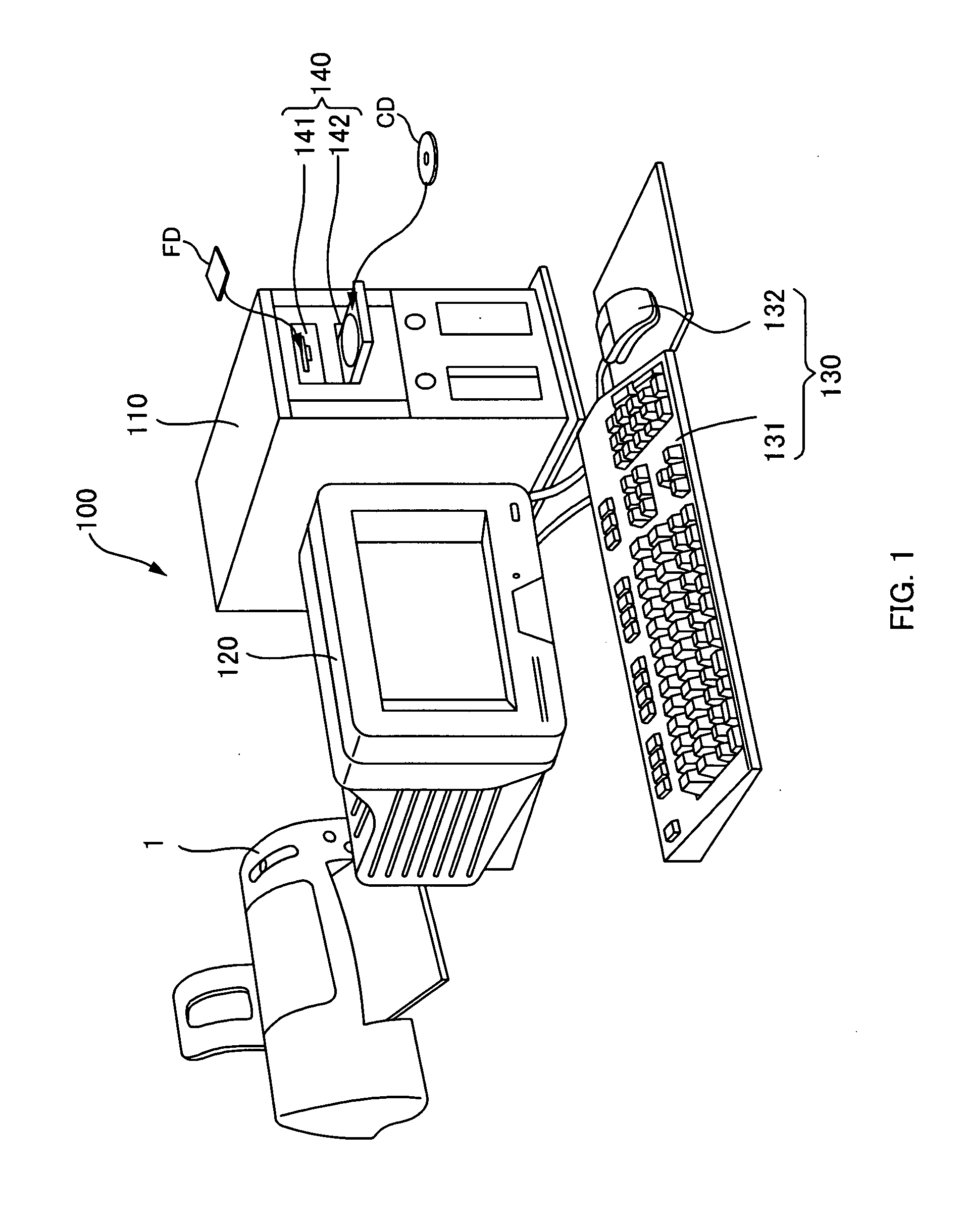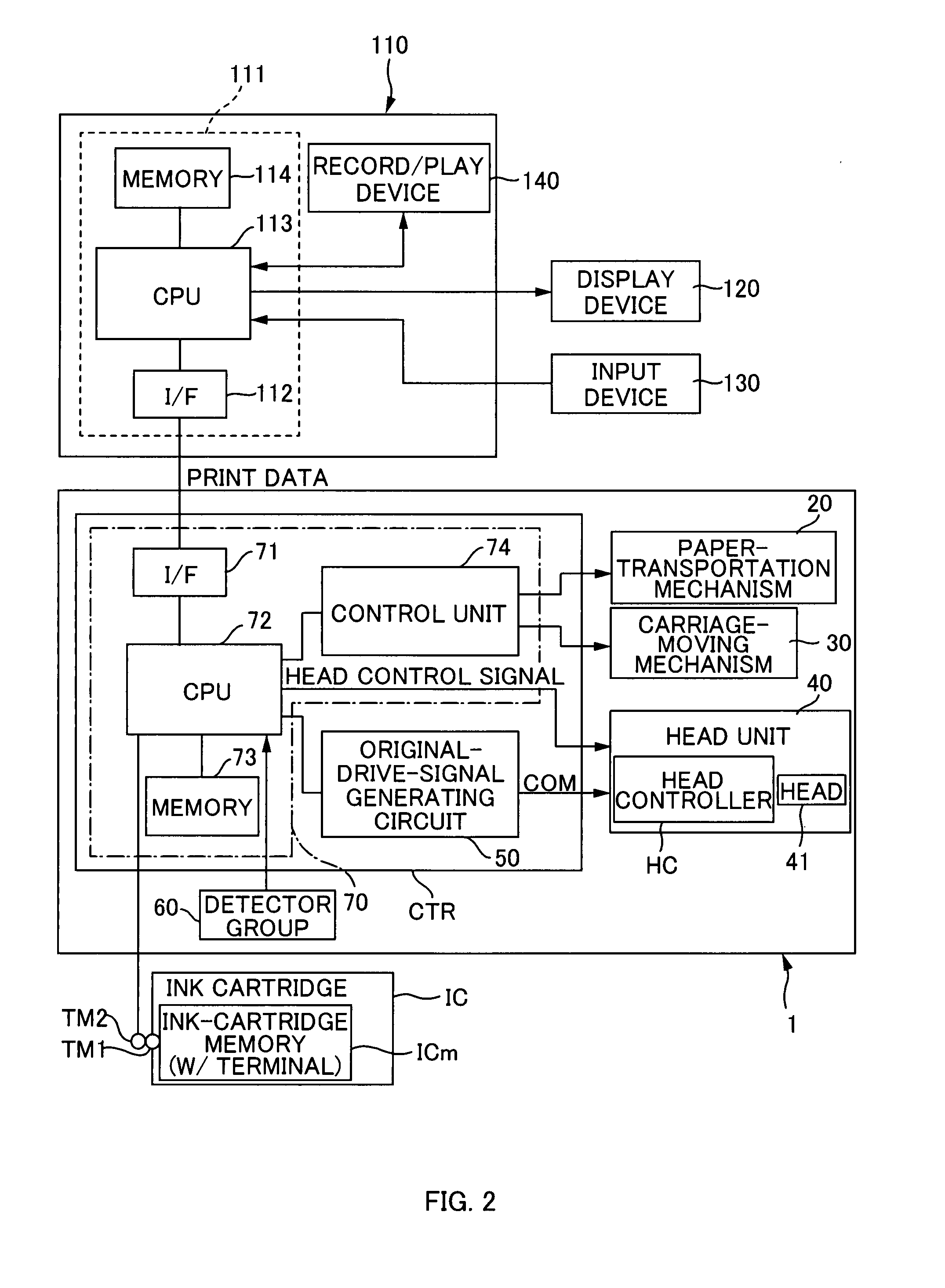Printing apparatus and printing method
- Summary
- Abstract
- Description
- Claims
- Application Information
AI Technical Summary
Benefits of technology
Problems solved by technology
Method used
Image
Examples
first embodiment
[0063] Configuration of Printing System 100
[0064] First, a printing apparatus is described with a printing system 100. Here, FIG. 1 is an explanatory diagram showing the configuration of the printing system 100. The illustrated printing system 100 has a printer 1 as the printing apparatus and a computer 110 as a printing control apparatus. Specifically, the printing system 100 has the printer 1, the computer 110, a display device 120, an input device 130, and a record / play device 140. The printer 1 prints an image on a medium, such as paper, cloth, film and the like. This section below describes an example of a sheet of paper S, which is a typical medium (see FIG. 3A). The computer 110 is communicably connected to the printer 1. In order to make the printer 1 print an image, the computer 110 outputs print data corresponding to that image to the printer 1. This computer 110 has computer programs, such as an application program and a printer driver, installed thereon. The display devi...
second embodiment
[0160] In the printing system 100 of the above-mentioned first embodiment, for a medium dot of the light ink and a small dot of the dark ink, the same drive pulse (the third drive pulse PS3) is used, and for a large dot of the light ink and a medium dot of the dark ink, the same drive pulses (the first drive pulse PS1 and the third drive pulse PS3) are used. With respect to this point, only for a large dot of the light ink and a small dot of the dark ink, a same drive pulse may be used. The printing system 100 of the second embodiment that is configured as mentioned above is described below.
[0161] Here, FIG. 15 is an explanatory diagram showing the original drive signal COM in the printing system 100 in the second embodiment.
[0162]FIG. 16A is a diagram showing drive signals generated in ejection of the light cyan ink and the light magenta ink, for each tone level.
[0163]FIG. 16B is a diagram showing drive signals generated in ejection of the dark cyan ink, the dark magenta ink, th...
PUM
 Login to View More
Login to View More Abstract
Description
Claims
Application Information
 Login to View More
Login to View More - R&D
- Intellectual Property
- Life Sciences
- Materials
- Tech Scout
- Unparalleled Data Quality
- Higher Quality Content
- 60% Fewer Hallucinations
Browse by: Latest US Patents, China's latest patents, Technical Efficacy Thesaurus, Application Domain, Technology Topic, Popular Technical Reports.
© 2025 PatSnap. All rights reserved.Legal|Privacy policy|Modern Slavery Act Transparency Statement|Sitemap|About US| Contact US: help@patsnap.com



